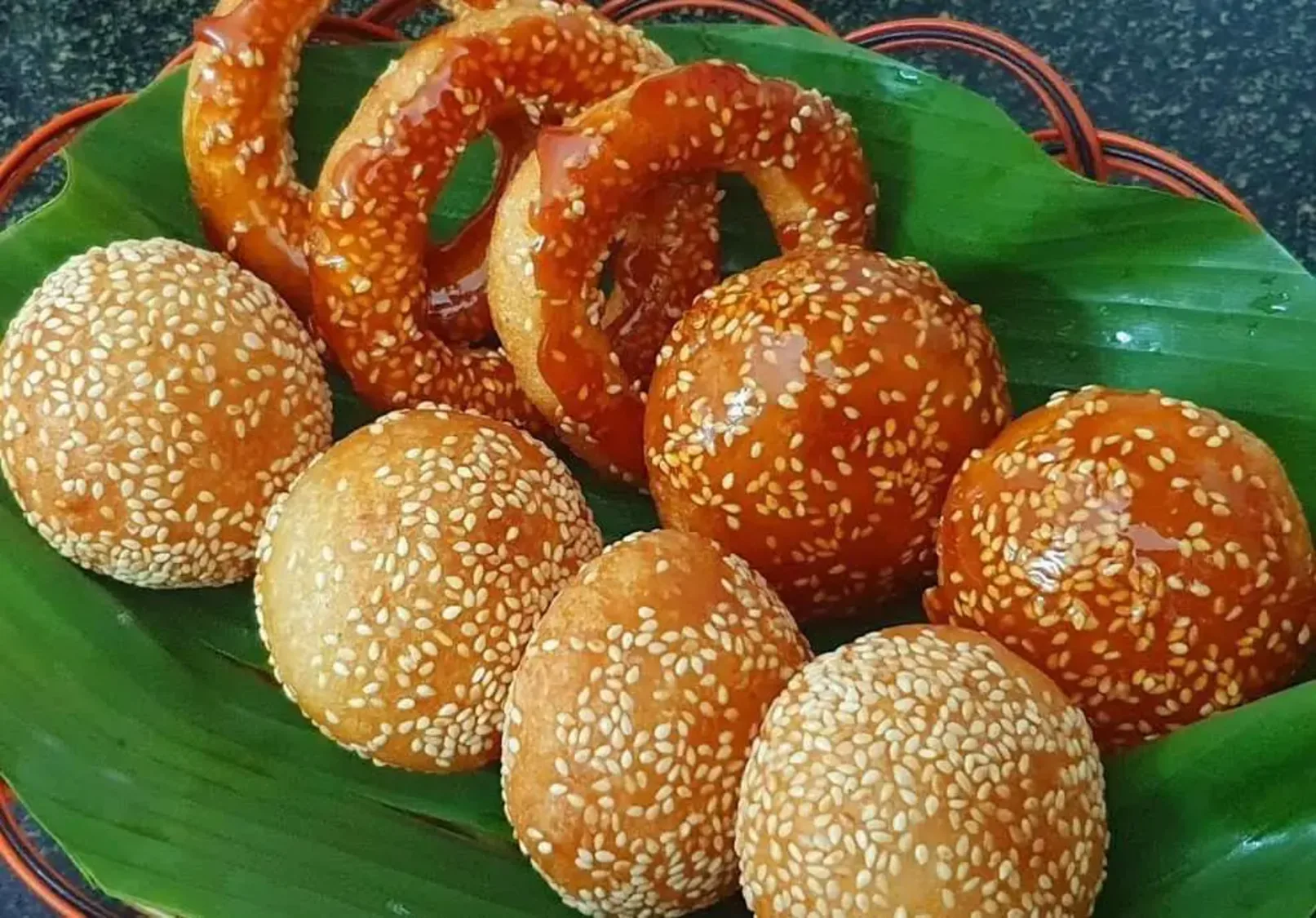
Banh Cam
Deep-fried sesame balls with mung bean filling.
Ingredients
- •Glutinous rice flour
- •Mung beans
- •Sesame seeds
- •Sugar
- •Oil
Instructions
Prepare Filling
Make sweet mung bean paste
Form & Fry
Shape balls and deep fry
Bánh Cam, also known as Vietnamese Sesame Balls, are delightful deep-fried pastries that feature a crispy, sesame-studded exterior and a sweet mung bean filling. These golden-brown spheres are a popular street food and dessert item that perfectly balances textures and flavors.
The dessert shares similarities with Chinese Jin Dui, though the Vietnamese version has evolved to have its own distinct characteristics. In Southern Vietnam, they're called Bánh Cam (Orange Cake) due to their resemblance to oranges, while in the North, they're known as Bánh Rán (Fried Cake).
The making of Bánh Cam is an art that requires patience and skill. The outer shell is made from glutinous rice flour mixed with regular rice flour and water to form a pliable dough. The filling consists of split mung beans cooked with sugar until it forms a smooth, sweet paste. Each ball is carefully assembled by wrapping the dough around a portion of the filling, then rolled in sesame seeds before deep-frying until golden and crispy.
While the traditional mung bean filling remains the most popular, modern variations include sweet taro paste, pandan-flavored mung bean, or even durian for those seeking more adventurous flavors. Some versions incorporate coconut shreds into the filling for added texture and tropical taste.
In Vietnam, Bánh Cam is typically enjoyed as a snack or dessert and is often served at room temperature. They're particularly popular during festivals and celebrations, where they're often presented alongside other traditional sweets. Street vendors sell them fresh and hot, while bakeries offer them packaged for takeaway.
While delicious, Bánh Cam is quite caloric due to the deep-frying process. The glutinous rice flour makes it unsuitable for those on gluten-free diets, and individuals with sesame allergies should avoid this dessert. However, the mung beans provide some nutritional benefits, including protein and fiber. As with most fried foods, it's best enjoyed in moderation as an occasional treat rather than a daily indulgence.
